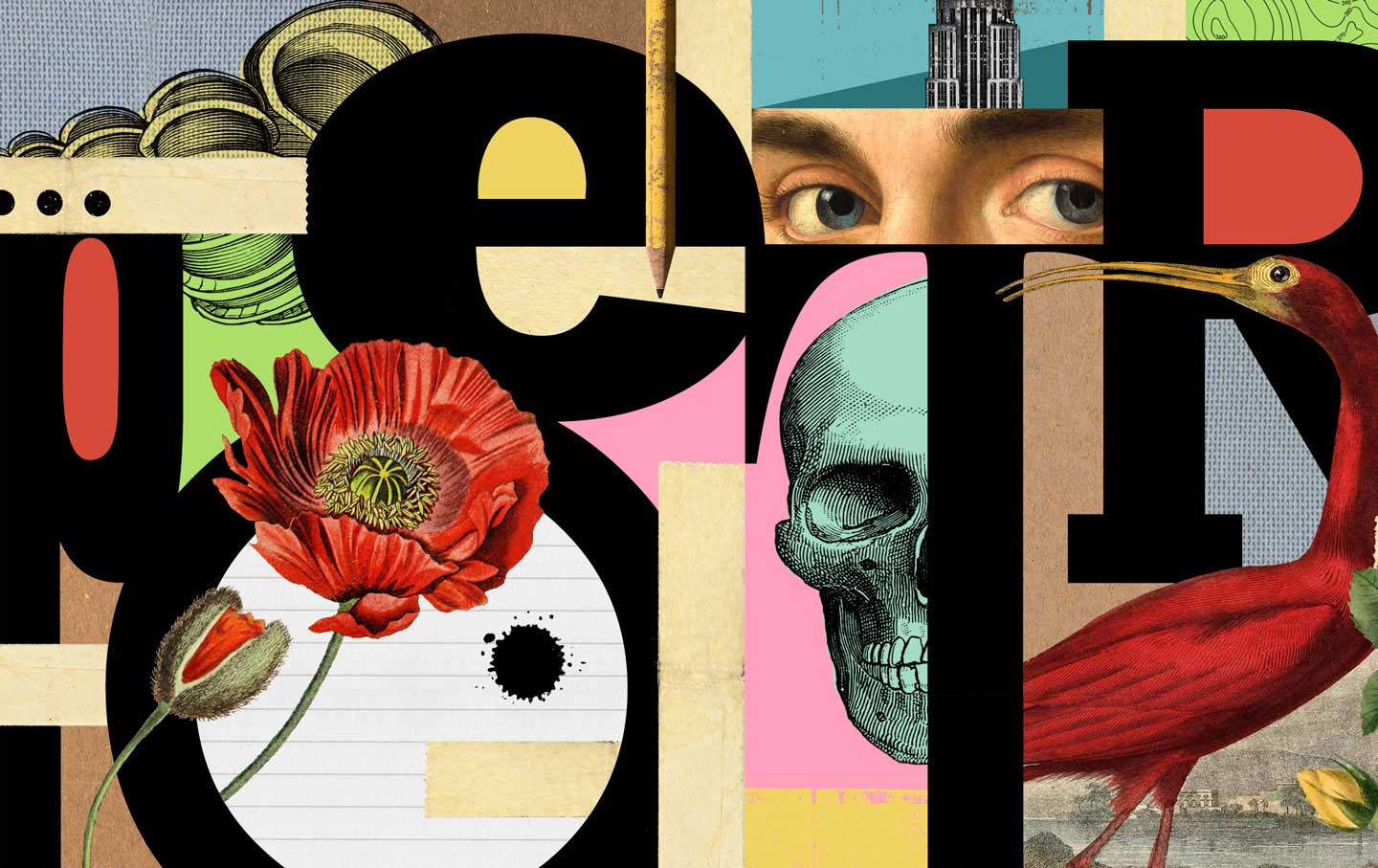The Inhuman Gaze of Evil Does Not Exist
The Inhuman Gaze of “Evil Does Not Exist”
Ryusuke Hamaguchi’s new film, an eco-thriller set in a sylvan Japanese town, explores the messy entanglements of human, machine, and nature that make up planetary existence.
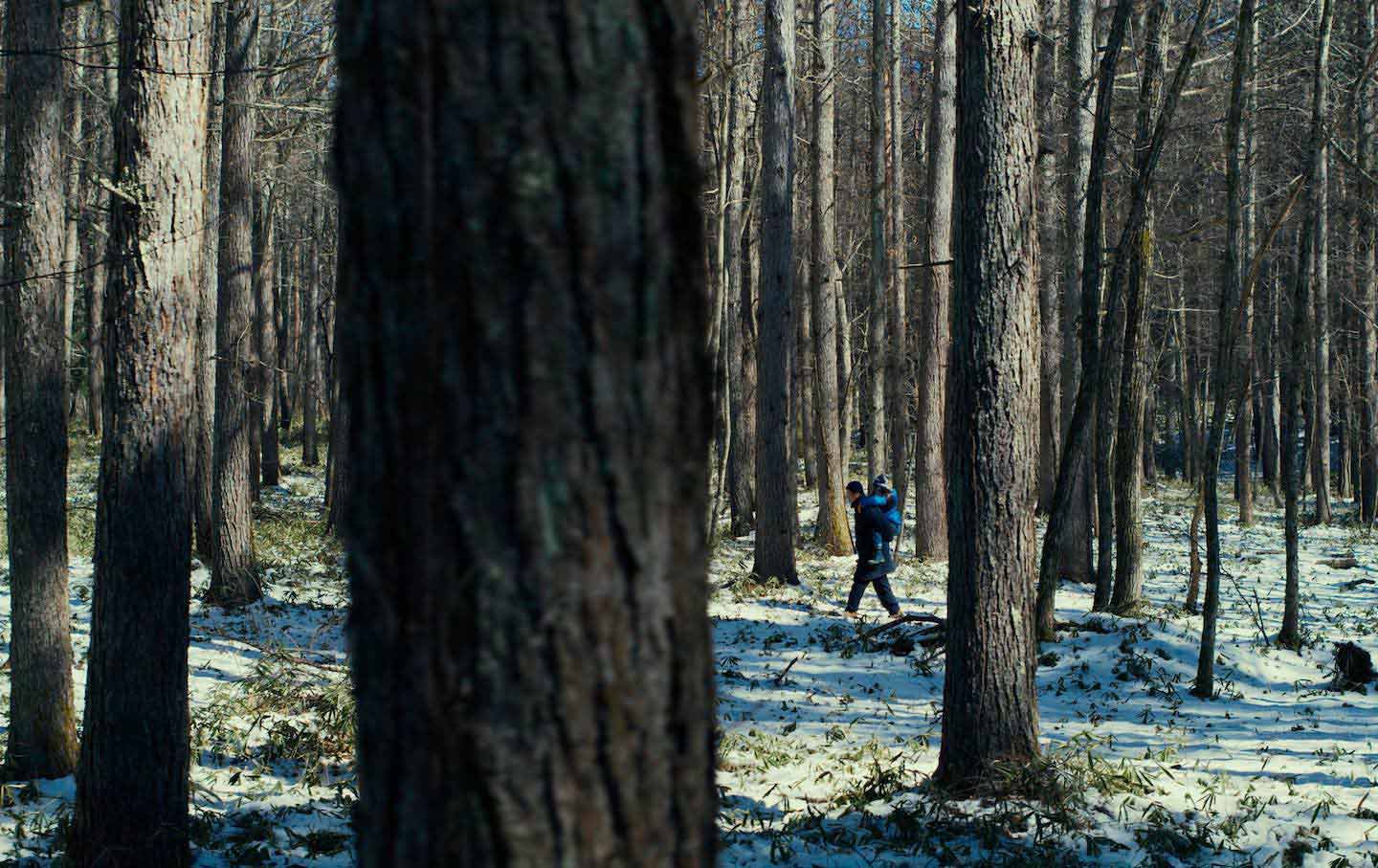
Early in Ryusuke Hamaguchi’s Evil Does Not Exist, an unexpected camera shot evicts us from our familiar human vantage: Somewhere in Mizubiki, an alpine village just outside Tokyo, two men walk through a forest draped in snow. Like curious wildlife nosing a hidden trail cam, they approach from the middle distance and pause in close-up, stunned by something in the foliage. “Wild wasabi,” one exclaims, peering directly into the camera with a look that razes the fourth wall, and for an instant, this is what we are: an edible perennial pushing its way through the winter frost.
The film’s opening stretch is marked by such coy excursions into nonhuman purviews—a long take from a rear windshield that seems to grant a car its own consciousness; an odd glimpse of the empty woods, shot as if seen through secret, sylvan eyes. These details are as vital to Evil Does Not Exist as its skeletal story: When a company proposes a “glamping” venture in Mizubiki for city folks seeking pastoral cosplay, the town’s residents must contend with the threats to their ecosystem. Unlike the recent spate of eco-thrillers that mine suspense from human action (or inaction) within the frame, Hamaguchi urges us to notice the frame itself, implicating the very apparatus of the camera and narrative cinema in a striking critique of our perceptual habits and their material stakes. Evil Does Not Exist wants us to miss the forest for the trees, pulling our gaze through the messy entanglements of human, machine, and nature that make up planetary existence and determine our place in its future.
At first, we follow Takumi (Hitoshi Omika), a local jack-of-all-trades, and his 8-year-old daughter, Hana (Ryo Nishikawa), through their life on the mountainside. Their father-daughter dynamic has a light survivalist bent; they spend their afternoons identifying plants in the surrounding verdure—oak, pine, Siberian ginseng—or examining deer tracks in the crystalline snow. Such rituals of observation seem innate for these two cabin dwellers, but Hana slips up now and then, misreading the black bark of larch for red pine, or inching too close to a plant with hidden thorns. This is how she learns, with her father’s gentle corrections a form of familial inheritance. Hana is given ample screen time but few lines, her hands ensconced in yellow mittens and her guileless mien in frequent close-up. Even as Hamaguchi avoids explicit hand-wringing about future generations and what they stand to lose, this image of a silent but watchful child haunts the film, a visual reminder that a worsening world will be someone else’s inheritance.
These thematic preoccupations are a sharp departure from Hamaguchi’s previous features, mostly dramas of interpersonal havoc and heartache that unfold in glossy urban milieux. His singular style, though, comes from his sense of duration, an instinct for pacing that can force an ordinary moment to yield its fallow mysteries. Hamaguchi knows, for instance, how to coax the strangeness out of a conversation or an awkward silence, keeping us there just long enough for the uncanny to slip out. He can excavate minor moods from scenes of casual encounter—at a bar or during a nighttime drive—and ambiently shift, mid-film, to this oblique new tone, then do it all again before the film’s end. This skill is fully on show in Evil Does Not Exist, but its moods are sourced from its forested environment instead of strictly human concerns like grief or marital strife. Eiko Ishibashi’s score is the main cue for any kind of feeling in a film that largely shirks legible emotion: The layered strings and synths swing from melodic lilt to eerie discordance, steeping the film in sensations inscrutable beyond their apparent intensity.
It’s easy to read some sense of detachment in Evil Does Not Exist, abundant with long, static shots of alpine terrains that keep us at a literal distance. In panoramic landscapes loaded with sky, we see faint ridges of mountains vanishing into the blue, and long bands of yellow reeds turned velvet in the winter light. Things are much busier inside the forest, each frame overlaid with a snarl of bare branches, stark against fresh snow. These woods are lovely, dark and deep, but even in scenes where sunlight finds its way into a copse, Hamaguchi sustains a simmering menace without the usual gimmicks of mist and shadow, though there is plenty of that towards the film’s end. Without human enterprise in the foreground, we are plunged into a kind of environmental horror vacui. When a shot lingers on an empty landscape, before characters enter the frame or after they’ve left, there’s a suggestion that, perhaps, there’s still more to see.
In many ways, these unusual sightlines and their effects recall those in Lucien Castaing-Taylor and Véréna Paravel’s Leviathan (2012), which Hamaguchi has said he watched as a visiting filmmaker at Harvard’s Reischauer Center. A landmark production from Harvard’s Sensory Ethnography Lab, Leviathan follows the operations of a fishing vessel at sea, filmed exclusively with GoPro cameras aboard the ship. The GoPros’ fisheye distortions create an extreme first-person view, its immediacy and immersive tactility locking us in the impossible perspective of the ship. There is nothing so visually disruptive in Evil Does Not Exist, but it shares in Leviathan’s mission of expanding the range of subjectivities that a camera might capture. In Hamaguchi’s film, the moments of displacement are so effective for their softness, registered as ineffable—or elusive, that catch-all qualifier—instead of didactic, just enough to prompt a head tilt or a quizzical squint.
About a third of the way in, Evil Does Not Exist leaves its matrix of beguiling images and enters an expository mode. In a dialogue-heavy set piece, Mizubiki’s frustrated residents gather for a town hall meeting with two corporate representatives. With their slick multimedia presentation and bevy of serious diagrams, the reps rely on a patina of professionalism for any kind of authority. Soon enough, they’re revealed to be unwitting stars in a comedy of bureaucratic delegation: These are neither glamping experts nor environmental engineers, but two oblivious intermediaries from Playmode—a talent agency, of all things, hired by a consulting firm to manage the project. Our corporate middlemen parrot facts from a set script without real understanding, their presence both an insult and a punch line.
Every flimsy assurance from the Playmode reps is pierced by a local’s eloquent objection. We learn that the installation of a septic tank for the campers will pollute Mizubiki’s water supply, and that the superior quality of this water is essential to the town’s identity and livelihood. We also learn that the Nakano region’s forests are prone to large wildfires, and careless tourists might double that risk. But mostly, we learn that the higher-ups calling all the shots for the venture do not care to be in this room.
If the film’s first third relied more on technical adjustments to gently unseat the spectator, there is a distinct narrative shift after the town hall, releasing us from a protagonist’s singular vantage point. Our father-daughter unit sustains the film’s faint pulse of emotion, but they recede into the background for long stretches. After the town hall, Hamaguchi takes us into an internal Zoom meeting between the Playmode employees and their CEO, a young man who is far from the expected caricature of corporate villainy. His demeanor is surprisingly placid but firm, with his measured suggestions that they concede to local demands where possible. When we slide into a long car ride with the two Playmode reps—already somewhat redeemed by their stated willingness to learn from the locals—they’re revealed to be reluctant corporate lackeys (one, a failed actor), on scant salaries and just trying to get by.
Even our investment in Takumi and Hana’s relationship is vague, since Hamaguchi withholds any specific exposition of their lives outside the frame. Early on, we are shown a single photo of a younger Hana with her absent mother, its frame perched atop a piano and barely visible in the dark. The scant backstory we receive, instead, is that of the region itself: After the Second World War, Nakano was opened up to people, like Takumi’s grandparents, for agricultural use. “In a way, all of us are outsiders,” Takumi stresses in the town hall scene. During the short history of human settlement in Mizubiki, outsiders have developed the region for their own habitation as much as they now threaten its future vitality.
This is the mystery that takes us to the film’s bewildering end, a minor chord that never resolves. There is no conclusive move toward ethical clarity; Evil Does Not Exist offers neither apologia for human development—by corporations or residents alike—nor a fervent plea for sustainability. After all, the solution is already obvious: The company should pause and rethink the glamping project. Instead, Hamaguchi is interested in the illegible and often irrational responses to our impotence, our inability to change our circumstances. Maybe, the film suggests, we might misdirect that despair into punitive violence, or perhaps we might step into a different worldview entirely. The film ends on the former note with a sudden act of brutality, but early on, there’s a glimmer of the latter when, one night, we follow Hana to sleep and then into her dreams. Like most children, she is both an innocent and a visionary, her naïveté the gift that allows her to see a world not yet settled. Her dreams are a blooming sequence of strange views: a watering hole in a frozen lake, its glass surface like a mirror hiding a portal; a bird soaring in a wide blue sky; a deer standing deep in the woods, fixated on something we cannot know.
In these moments, Evil Does Not Exist returns us to a primal scene in the history of cinema, when film technology reshaped our relation to the world by expanding the scope of what we could look at and where, defying the circumscriptions of time and space. Cinema’s past century of technical devices have become as routine as grammar in a native tongue, but before the medium’s narrative turn in the 1910s, it offered simpler thrills: What stunned us were the series of views that this new apparatus could provide, its capture of incidental motion. In the actuality films of early cinema, it was “the ripple of leaves stirred by the wind” that so enraptured the theorist Siegried Kracauer, “nature caught in the act.” As Hamaguchi seems to know, such is cinema’s potential as a mode of eco-criticism, his film a reminder that, with the right tilt of the camera, the sightline positioned just so, we can take residence in something outside of ourselves.
Disobey authoritarians, support The Nation
Over the past year you’ve read Nation writers like Elie Mystal, Kaveh Akbar, John Nichols, Joan Walsh, Bryce Covert, Dave Zirin, Jeet Heer, Michael T. Klare, Katha Pollitt, Amy Littlefield, Gregg Gonsalves, and Sasha Abramsky take on the Trump family’s corruption, set the record straight about Robert F. Kennedy Jr.’s catastrophic Make America Healthy Again movement, survey the fallout and human cost of the DOGE wrecking ball, anticipate the Supreme Court’s dangerous antidemocratic rulings, and amplify successful tactics of resistance on the streets and in Congress.
We publish these stories because when members of our communities are being abducted, household debt is climbing, and AI data centers are causing water and electricity shortages, we have a duty as journalists to do all we can to inform the public.
In 2026, our aim is to do more than ever before—but we need your support to make that happen.
Through December 31, a generous donor will match all donations up to $75,000. That means that your contribution will be doubled, dollar for dollar. If we hit the full match, we’ll be starting 2026 with $150,000 to invest in the stories that impact real people’s lives—the kinds of stories that billionaire-owned, corporate-backed outlets aren’t covering.
With your support, our team will publish major stories that the president and his allies won’t want you to read. We’ll cover the emerging military-tech industrial complex and matters of war, peace, and surveillance, as well as the affordability crisis, hunger, housing, healthcare, the environment, attacks on reproductive rights, and much more. At the same time, we’ll imagine alternatives to Trumpian rule and uplift efforts to create a better world, here and now.
While your gift has twice the impact, I’m asking you to support The Nation with a donation today. You’ll empower the journalists, editors, and fact-checkers best equipped to hold this authoritarian administration to account.
I hope you won’t miss this moment—donate to The Nation today.
Onward,
Katrina vanden Heuvel
Editor and publisher, The Nation
More from The Nation
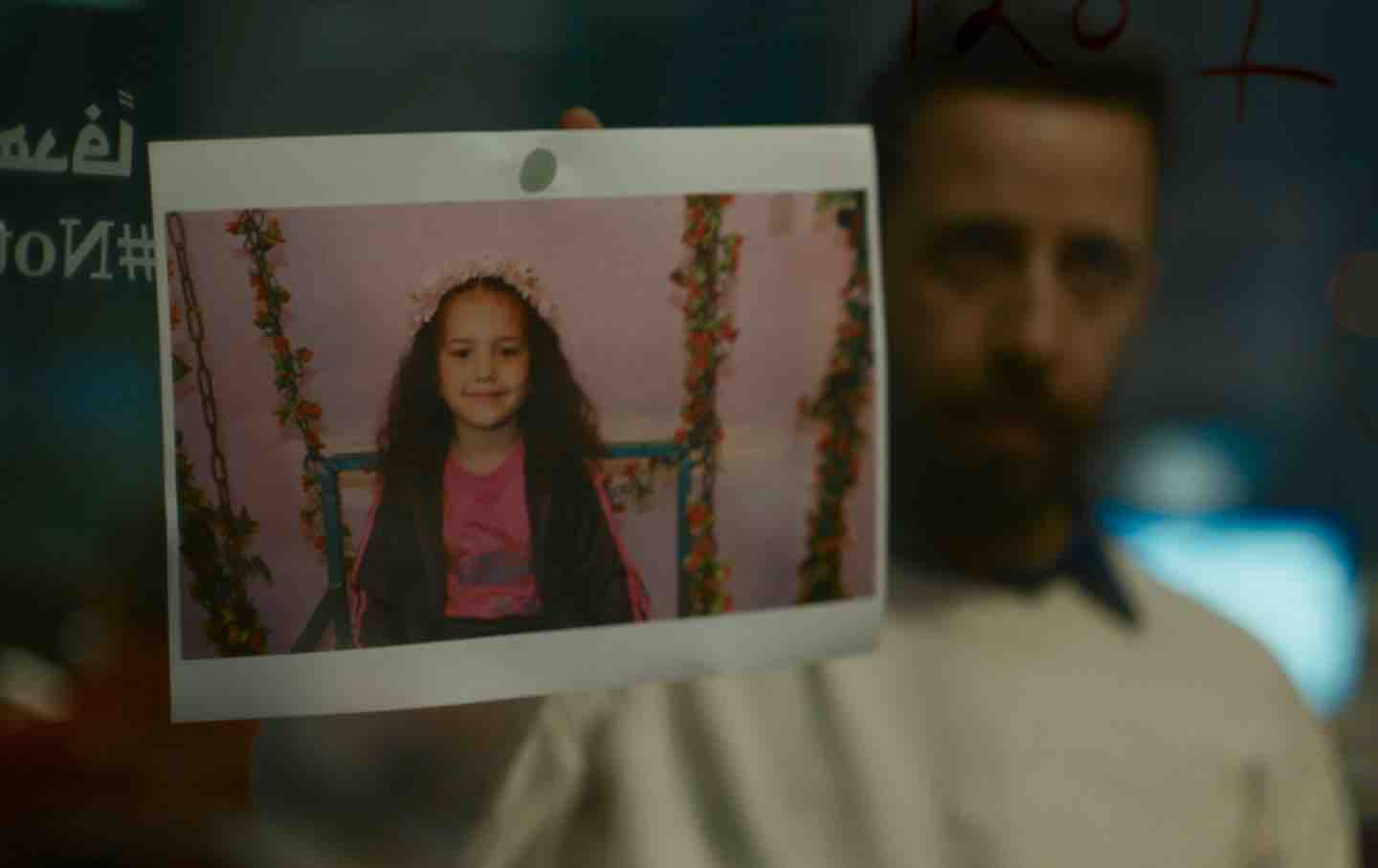
Why “The Voice of Hind Rajab” Will Break Your Heart Why “The Voice of Hind Rajab” Will Break Your Heart
A film dramatizing a rescue crew’s attempts to save the 5-year-old Gazan girl might be one of the most affecting movies of the year.
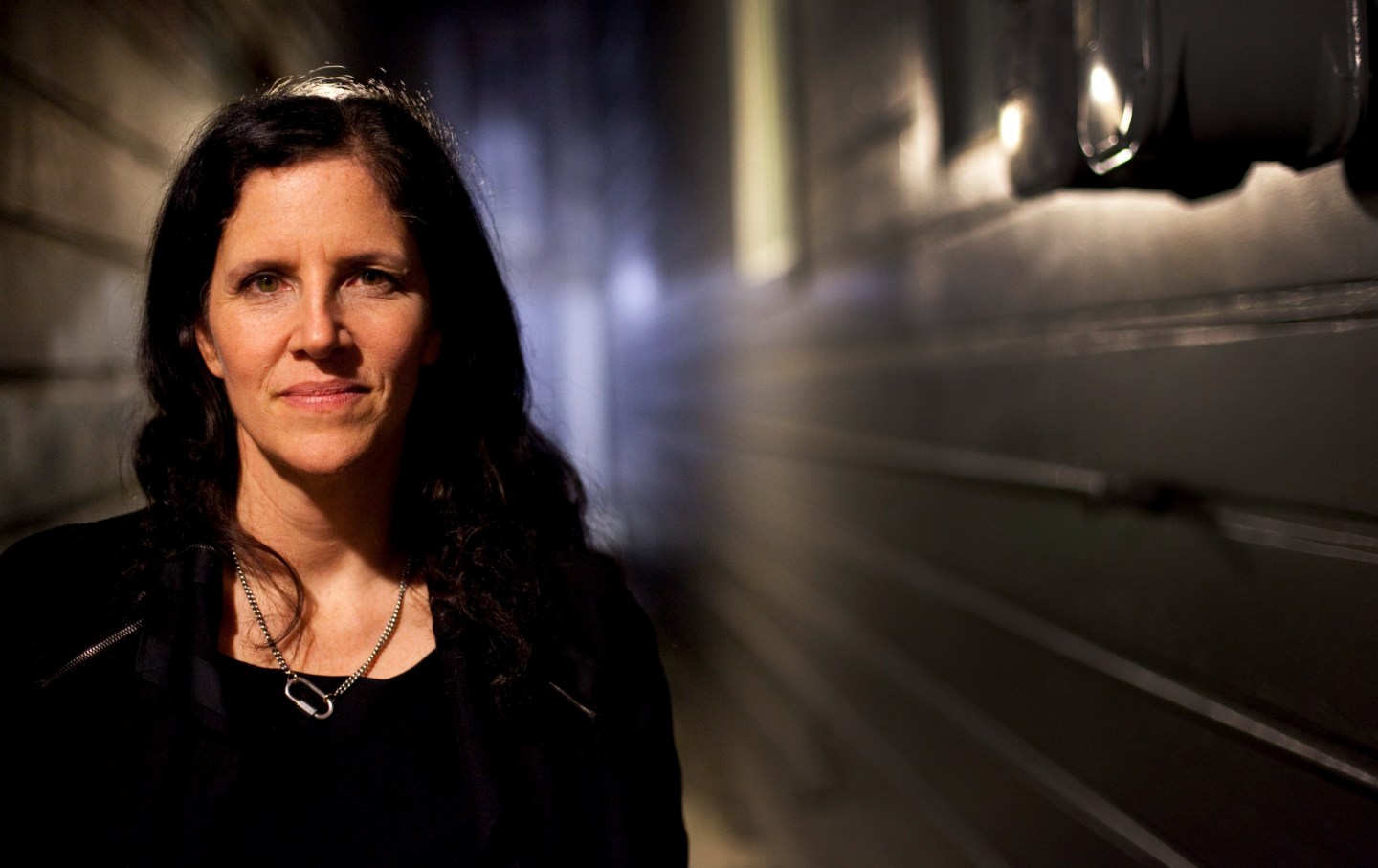
How Laura Poitras Finds the Truth How Laura Poitras Finds the Truth
The director has a knack for getting people to tell her things they've never told anyone else—including her latest subject, Seymour Hersh.
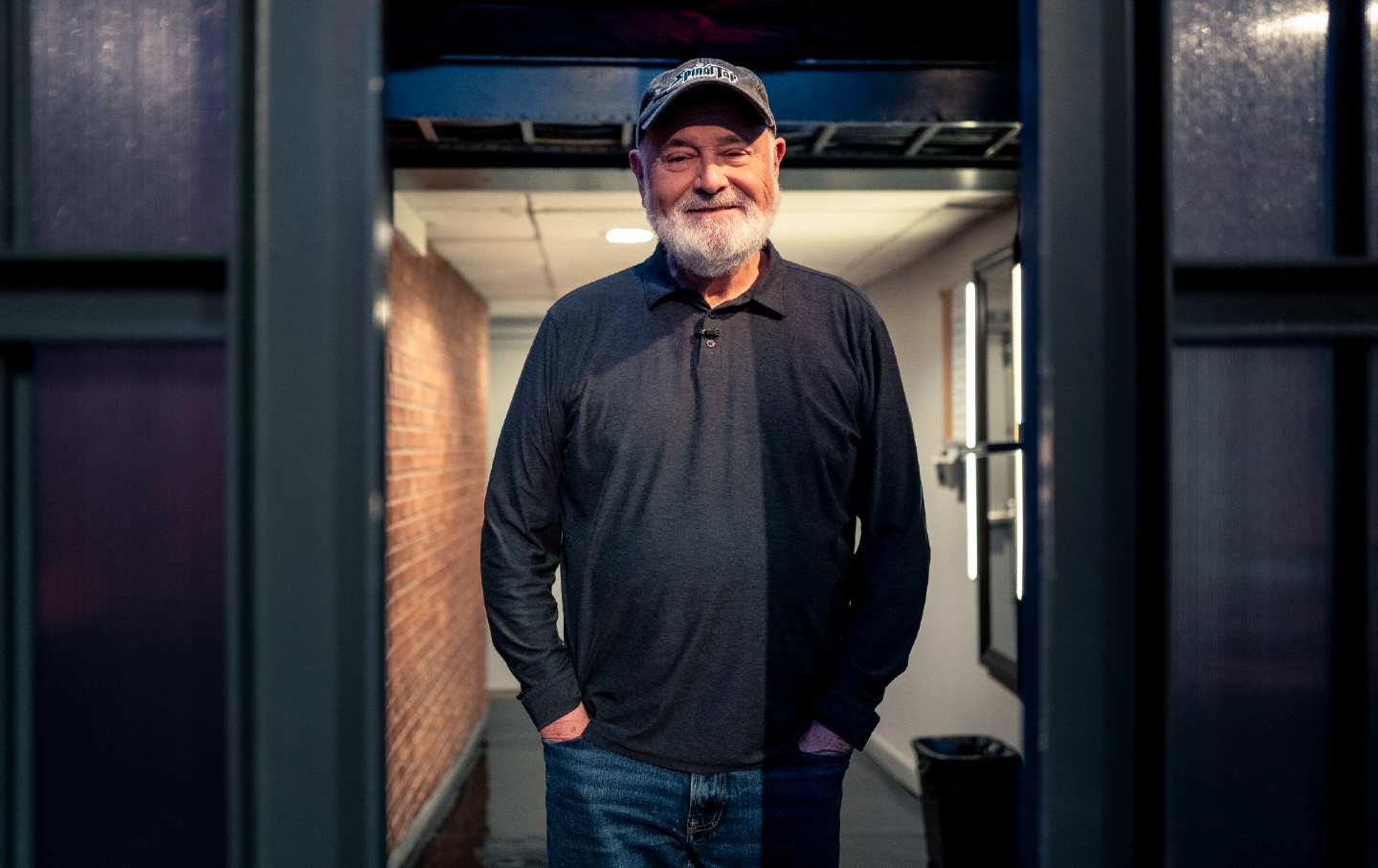
Rob Reiner’s Legacy Can't Be Sullied by Trump’s Shameful Attacks Rob Reiner’s Legacy Can't Be Sullied by Trump’s Shameful Attacks
The late actor and director leaves behind a roster of classic films—and a much safer and juster California.
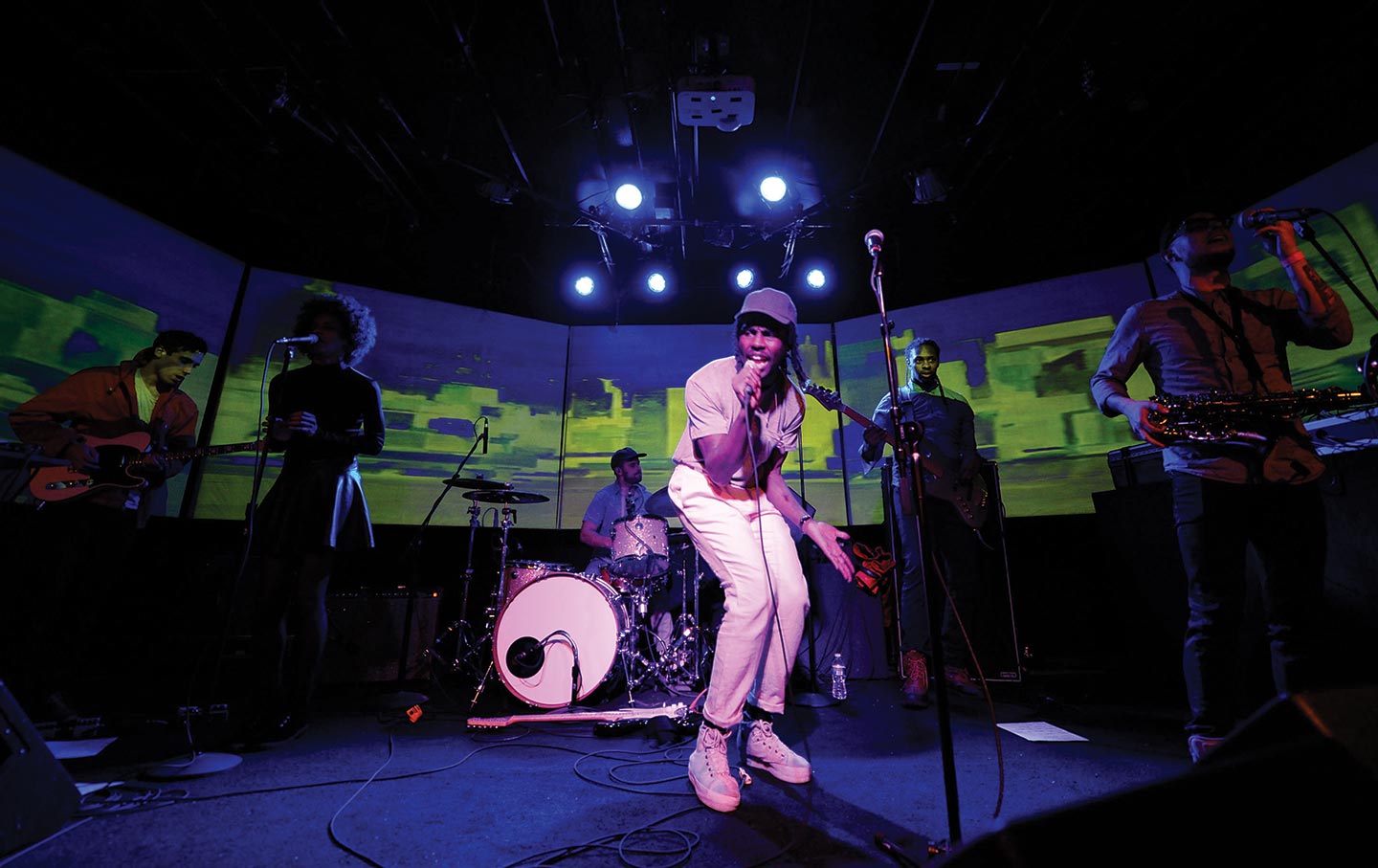
Blood Orange’s Sonic Experiments Blood Orange’s Sonic Experiments
Dev Hynes moves between grief and joy in Essex Honey, his most personal album yet.

